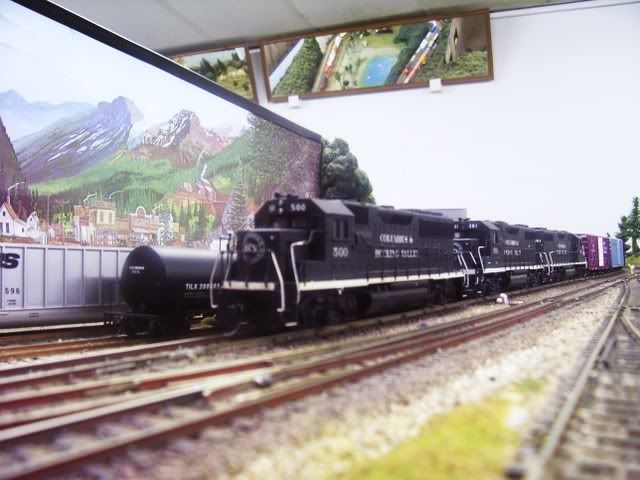I hope the answers will not be as dumb as the question sounds![:D]
I know there are a lot of factors that comes into play with what a engine can pull. Weight, motor, drive wheels, how free the rolling stock rolls, radii of turns, power supply and finally grades.
For what ever reason I seem to have a lot of problems with engines breaking down. To see what span this question look in the DCC section.
I do re lie a lot on the reviews in magazines, but could the reviews be a little kinder than they should be? For you old gear heads like me when Hot Rod magazine reviewed a 69 Road Runner, 4 speed, 4.10 gears drove by Ronnie Sox’s could cut 12.9’s stock as a rock with slicks? I know that was BS being a Mopar racer.
Or is more like it can pull 80 free wheeling car’s on a level and straight track, but if you do it for 3 hours it going to hurt something?
When I was DC and ran only Athearn BB engines I had a few problems, mainly having the flywheels slipping on the motor, had a few rotten motor mounts.
Now in DCC, I melt wires, melt decoders, one steam engine drive wheels came out of quarter and another one likes to crack tower gears.
I think I am buying good engines. All my Steam is either BLI or PCM, Diesel are Proto 1000’s, Proto 2000’s, Blue Line, Athearn RTR and few old Blue Box Athearns that just keep on going, and going and going.
I do like longer trains, a normal diesel train on the main line is 30 to 45 cars over 45 they are doubled headed. Steam is 25 to 30 cars not counting the PCM Big Boy or Y-6b which is 45 to 60 cars.
I am 98% sure the track is wired right except may be the turn outs. No shorts, but I never powered the frogs. I am HO scale, DCC Bachma

